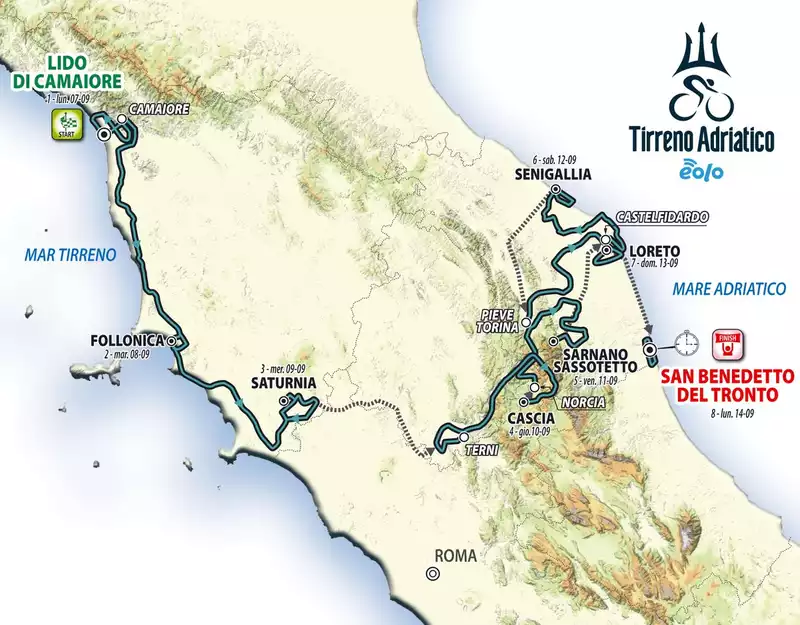This year's Tirreno-Adriatico will be held September 7-14 and will consist of eight stages instead of the usual seven.
The Italian stage race will be held during the second week of the Tour de France, and will feature Vincenzo Nibali (Trek-Segafredo), Remco Evenepoel (Detunink-Quick Step), 2019 Corsa Rosa winner Richard Carapaz (Team Ineos) Os), and many others, who hope to attract a large number of riders who will be aiming for the Giro d'Italia in October.
Big-name sprinters such as Dylan Groenewegen (Jumbo Visma) and Fernando Gaviria (UAE Team Emirates) are also expected to head to Italy as the team focuses on the overall race at the Tour de France. Mathieu Van der Poel (Alpecin Phoenix) is also expected to compete in Tirreno-Adriatico in preparation for the Classics in October.
Primoš Roglic (Jumbo Visma) beat Adam Yates and Jakub Fuglsang in 2019, but the Slovenian will not be able to defend his trifecta trophy as he will compete in the Tour de France in 2020. This year's competition was scheduled for March, but was postponed due to the COVID-19 coronavirus pandemic in Italy.
The Tirreno Adriatico will again start on the Tyrrhenian coast of Tuscany, with road race stages around the Lido di Camaiore. The second stage will take the riders to Follonica and the third stage to the natural hot spring resort of Saturnia.
The next stage takes place in Umbria, with a new 194-km route avoiding the Lazio region. It is the first real mountain stage, climbing up the Forca di Guardo and through the Plain of Castelluccio to the 1521-meter-high Rifugio Perugia. The descent to Norcia leads to the climb to Ospedaletto and a quick descent to the finish in Cascia.
Stage 5 is similar, followed by Monti Sibillini. The climbs of San Ginesio, Guardo, and Penna San Giovanni are followed by the final climb from Sarnano to Sassottetto. The stage is 14.2 km long with an average gradient of 5.8% and one section of 12%. The last kilometer of the stage coincides with the final climb to Sassotet. Climbers will have to attack here in order to pull away from the stronger time trialists in the final TT on the Adriatic coast.
Stage 6, Senigallia, is a day for sprinters, and stage 7, Loreto, has the steep "Murri" climb that traditionally appears in the Tirreno-Adriatico.
All of these are concentrated in three laps of the circuit that climbs to the finish in Loreto. The final gradient reaches 10% with 1 km to go.
The winner will again be decided in the final individual time trial up and down the seafront in San Benedetto del Torronto.
"The eight stages made the race a little more difficult and allowed us to balance the stages for sprinters, finishers, and climbers in addition to the usual final ITT," Stefano Allocchio, race director of RCS Sport said.
"Despite the change of dates, the cooperation of the local authorities allowed us to organize a Tirreno Adriatico of the highest quality, which will attract almost all the competitors for the Giro d'Italia in October and, as in recent years, we are confident that it will be a "race of two seas" of the highest level We are looking forward to it."


Comments